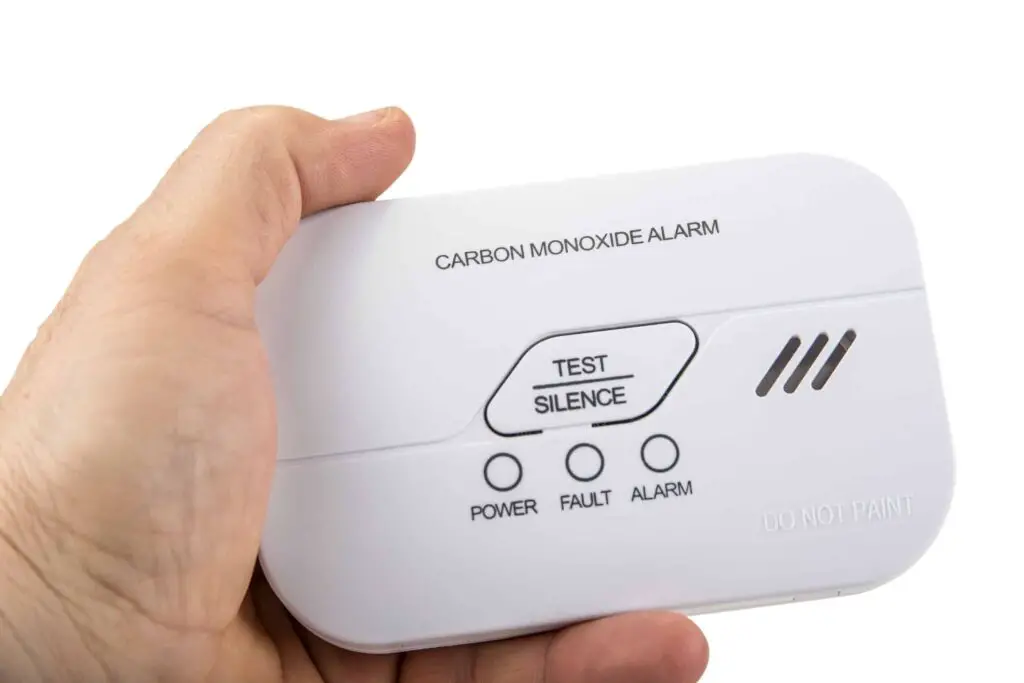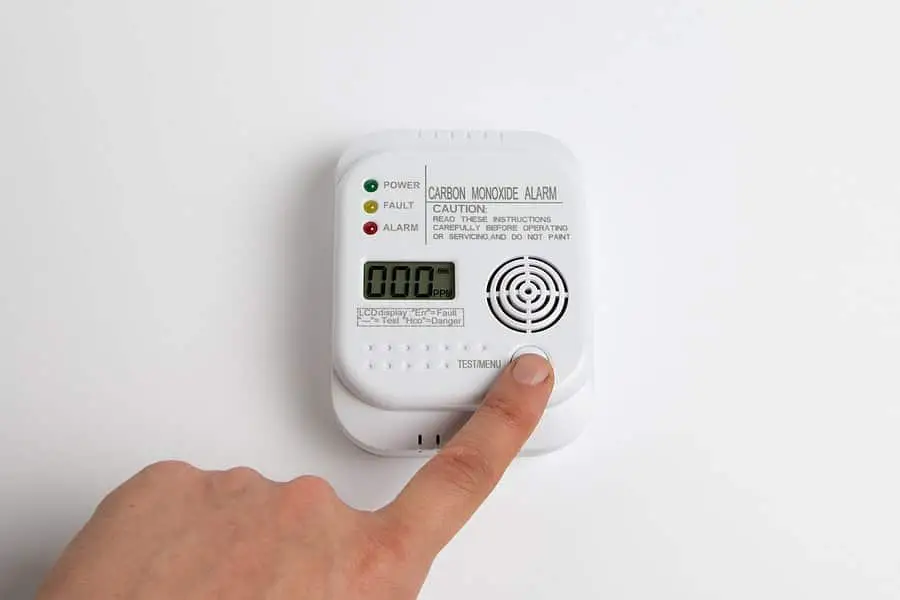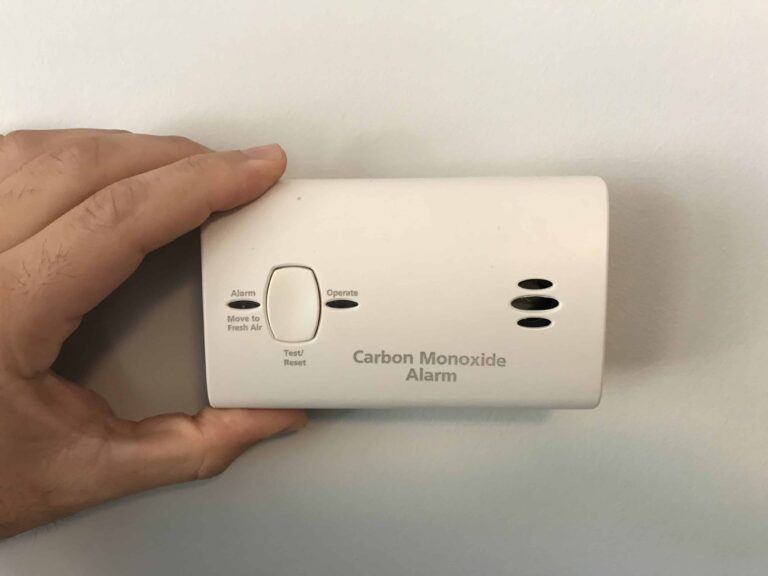Introduction
Where Do You Put A Carbon Monoxide Detector: Ensuring the safety of your home and the well-being of your loved ones is of paramount importance. Among the potential hazards that can pose a serious threat to your household, carbon monoxide (CO) stands out as a silent and potentially deadly gas. Carbon monoxide is a colorless, odorless, and tasteless gas that is produced by the incomplete combustion of fuels such as natural gas, oil, wood, and coal. Due to its elusive nature, carbon monoxide can accumulate without any noticeable signs, making it imperative to have a reliable and strategically placed carbon monoxide detector in your home.
We will explore the crucial role of carbon monoxide detectors in safeguarding your living spaces and provide valuable insights into the optimal locations for placing these detectors to effectively detect and alert you in case of a carbon monoxide leak. By understanding where to position these detectors, you can take a proactive step towards ensuring a safer and healthier environment for you and your family. In the pursuit of a secure and comfortable living environment, there are certain threats that demand our vigilance, even if they remain unseen. One such hidden danger is carbon monoxide (CO), a poisonous gas that has earned its reputation as the “silent killer.”
Incomplete combustion from furnaces, water heaters, fireplaces, and cars produces colorless, odorless, and tasteless carbon monoxide. Without accurate detection, its existence may go undetected until it’s too late. A modest device with a big job protecting your house is the carbon monoxide detector. This tutorial explains the importance of carbon monoxide detectors and helps you place them in your home. Understanding detector placement science empowers you to prevent carbon monoxide poisoning and protect your family.

How is a carbon monoxide detector installed?
Secure the detector above any door or window, but at least 15 cm from the ceiling. If there is a partition in the room, the detector should be installed on the same side as the potential source of carbon monoxide.
Carbon monoxide detectors monitor air quality and inform occupants when levels are dangerous. These gadgets use sensors to detect CO and alarm residents. Battery-operated, plug-in, and hardwired carbon monoxide detectors have distinct installation requirements.
The position of your carbon monoxide detector is critical. Install it where carbon monoxide can collect or where inhabitants are most sensitive. Install detectors near sleeping areas and on every floor of your home. Avoid installing detectors near fuel-burning equipment to avoid false alerts from tiny emissions.
Different types and models of carbon monoxide detectors may have specific installation instructions. It’s imperative to carefully read and follow the manufacturer’s guidelines provided in the user manual. These instructions often outline proper mounting heights, recommended distances from potential sources of CO, and any specific requirements for batteries or power sources.
For battery-operated detectors, open the device to access the battery compartment. Insert the appropriate batteries according to the manufacturer’s instructions. Ensure the batteries are installed correctly and securely.
Do carbon monoxide detectors go in every room?
Ideally, you should have carbon monoxide detectors placed throughout your home, as you do smoke alarms. You should place a CO detector in each major area of your home: in the kitchen, in your living/dining room, in your bedrooms, and the office.
Where to position carbon monoxide detectors requires identifying sources. Furnaces, water heaters, stoves, and fireplaces emit CO. Detectors should be positioned near these appliances, but not so close that tiny emissions cause false alerts.
Placing carbon monoxide detectors near sleeping areas is crucial because people are most vulnerable when they’re asleep. Ideally, there should be at least one detector on each floor of your home, including the basement. Bedrooms and hallways leading to bedrooms are prime locations for installation.
Install carbon monoxide detectors at eye level or slightly above. Since carbon monoxide is roughly the same density as air, this positioning ensures the detector can accurately sense the gas concentration in the breathing zone.
Placing detectors in central areas of your home can help ensure even distribution of CO detection. Hallways, common rooms, and areas near staircases can provide comprehensive coverage without the need for detectors in every individual room.
Placing detectors too close to fuel-burning appliances or in areas with high humidity or temperature fluctuations can result in false alarms. Balancing proximity to potential sources of CO with avoiding false alarms is essential for effective detection.
How do I know if I need a carbon monoxide detector?
The Consumer Product Safety Commission recommends a detector on each floor of a residence. At least one detector should be installed on each sleeping floor and one near important gas-burning appliances like furnaces and water heaters.
Fuel-Burning Appliances: Furnaces, water heaters, stoves, and fireplaces can produce carbon monoxide if not properly ventilated or maintained.
Attached Garages: If your home has an attached garage, vehicles running within it can release carbon monoxide, which can seep into living areas if not adequately contained.
Generator Use: Operating generators indoors or in enclosed spaces can lead to dangerous CO levels.
Blocked Ventilation: Blocked chimneys, flues, or vents can cause carbon monoxide to accumulate indoors.
Poorly Ventilated Spaces: Improperly ventilated rooms or areas without adequate airflow can trap carbon monoxide indoors.
Type of Housing: If you live in a house with fuel-burning appliances, an attached garage, or any potential CO emission sources, a carbon monoxide detector is highly recommended.
Apartment or Condo: Even in multi-unit buildings, the presence of shared ventilation systems or fuel-burning appliances in neighboring units can pose risks. Check with your building management regarding detector regulations.
What does carbon monoxide smell like?
Carbon monoxide has no smell. It is an odorless, colorless gas that’s a byproduct of combustion. Because carbon monoxide can leak from your gas furnace, stove, dryer, water heater, wood stove or gas fireplace, it is essential to put safeguards in place for immediate detection when a leak occurs.
Humans detect odors using nasal olfactory receptors. These receptors detect air molecules and give impulses to the brain, which interprets them as odors. Carbon monoxide is unnoticeable to our sense of smell since it does not stimulate these receptors.
The chemical structure of carbon monoxide makes it odorless. Carbon monoxide is a simple molecule with one carbon and one oxygen atom. CO has no scent because it lacks functional groups that interact with olfactory receptors, unlike substances that have complex chemical structures.
Carbon monoxide is deadly since it’s odorless. Without a scent, people can be exposed to this harmful gas without knowing it. Homes, garages, and poorly ventilated areas are common places for carbon monoxide poisoning. CO poisoning’s initial symptoms are similar to headaches, dizziness, nausea, and confusion. Chest pain, decreased vision, and loss of consciousness might develop after prolonged exposure.
Carbon monoxide is sneaky, so our sense of smell alone cannot protect us. Here, carbon monoxide detectors are crucial. These gadgets continuously monitor CO levels and sound a loud warning when unsafe concentrations are discovered. Install carbon monoxide detectors in crucial places of your home to receive timely alerts and prevent CO poisoning.
What are two warning signs of carbon monoxide poisoning?
What are the symptoms of CO poisoning? The most common symptoms of CO poisoning are headache, dizziness, weakness, upset stomach, vomiting, chest pain, and confusion. CO symptoms are often described as “flu-like.” If you breathe in a lot of CO it can make you pass out or kill you.
Ventilate the Area: Open windows and doors to allow fresh air to circulate and help dissipate any accumulated carbon monoxide.
Leave the Premises: If you’re in a building or area where you suspect carbon monoxide is present, evacuate immediately. Get to an open area where you can breathe fresh air.
Seek Medical Attention: Contact emergency medical services to receive prompt medical evaluation and treatment. Carbon monoxide poisoning can lead to serious health complications, including brain damage and death, so seeking professional help is crucial.
Contact Professionals: After ensuring your safety and seeking medical attention, contact professionals to inspect and address the source of carbon monoxide emissions, such as a malfunctioning appliance or inadequate ventilation.
The best defense against carbon monoxide poisoning is prevention. Ensure the proper functioning and regular maintenance of fuel-burning appliances, chimneys, and vents. Install carbon monoxide detectors on every level of your home and near sleeping areas, as these devices can provide early warnings of elevated CO levels, even before symptoms become apparent.
How long do carbon monoxide detectors last?
5 to 7 years
Although you replace the batteries, carbon monoxide alarms don’t last forever. They have a lifetime of 5 to 7 years, but it is important to refer to your user manual. After 5 to 7 years, replace the CO alarm completely.
Sensor Type: Carbon monoxide detectors typically use electrochemical sensors to detect CO levels. These sensors can deteriorate over time due to exposure to humidity, temperature fluctuations, and other environmental factors.
Quality: Higher-quality carbon monoxide detectors tend to have longer lifespans. Investing in a reputable brand and model can contribute to the longevity and reliability of the device.
Environmental Conditions: Harsh conditions, such as extreme temperatures and high humidity, can accelerate sensor degradation and shorten the lifespan of the detector.
Battery Life: If your carbon monoxide detector operates on batteries, the lifespan of the batteries can impact the overall lifespan of the device. Regularly replacing batteries and following manufacturer recommendations is important.
Regulatory Changes: Over time, safety standards and regulations for carbon monoxide detectors may evolve. Replacing older models ensures that you have the latest technology and compliance with current standards.
How long does it take to get carbon monoxide poisoning?
How much is dangerous? High concentrations of carbon monoxide kill in less than five minutes. At low concentrations it will require a longer period of time to affect the body. Exceeding the EPA concentration of 9 ppm for more than 8 hours is suspected to produce adverse health affects in persons at risk.
Concentration of CO: The higher the concentration of carbon monoxide in the air, the quicker symptoms of poisoning can manifest.
Duration of Exposure: Prolonged exposure to even low levels of carbon monoxide can lead to poisoning over time.
Individual Sensitivity: Different individuals have varying sensitivities to carbon monoxide, which can impact the speed at which symptoms develop.
Activity Level: Physical activity can increase the rate at which carbon monoxide is inhaled, leading to quicker symptoms.
Health Status: Pre-existing health conditions, such as heart or respiratory problems, can exacerbate the effects of carbon monoxide poisoning.
Early Stages (Mild Exposure): In cases of mild exposure to low levels of carbon monoxide, initial symptoms may resemble those of the flu. Headaches, nausea, dizziness, and fatigue can develop within a few hours of exposure. These symptoms might be mistaken for other illnesses.
Intermediate Stages (Moderate Exposure): With increased exposure or higher levels of carbon monoxide, symptoms can worsen. Mental confusion, impaired judgment, difficulty breathing, and chest pain may occur within a few hours.
How to reduce carbon monoxide?
Steps to Reduce Exposure to Carbon Monoxide
- Keep gas appliances properly adjusted.
- Consider purchasing a vented space heater when replacing an unvented one.
- Use proper fuel in kerosene space heaters.
- Install and use an exhaust fan vented to outdoors over gas stoves.
- Open flues when fireplaces are in use.
Preventing indoor carbon monoxide buildup requires adequate ventilation. Make sure kitchens, furnaces, and water heaters have good airflow. Clean and inspect vents, chimneys, and flues regularly to prevent blockages that can impede ventilation.
Preventing carbon monoxide emissions requires professional fuel-burning appliance maintenance. Check your furnace, water heater, fireplace, and other appliances annually for gas leaks and proper operation.
Early identification of high CO levels requires CO detectors. Install detectors on every floor, near sleeping spaces, and near fuel-burning appliances. To ensure effectiveness, install and test according to manufacturer instructions.
Generators, grills, and gas-powered tools should never be used indoors. Running such equipment with doors and windows open may not be enough to prevent CO accumulation.
Cooking and bathroom exhaust fans can lower indoor air pollutants like carbon monoxide. Cleaning and maintaining these systems regularly ensures their efficacy.

Conclusion
As you conclude your journey into understanding the significance of carbon monoxide detectors and their optimal placement, it becomes evident that these unobtrusive devices carry a weighty responsibility in protecting your household from a hidden threat. Carbon monoxide, with its silent and insidious nature, can jeopardize the safety and well-being of your loved ones without warning. By carefully positioning carbon monoxide detectors in key areas, you establish a crucial line of defense against this potentially deadly gas.
Strategically installing these detectors near sleeping rooms, CO sources, or on every level of your home allows you to immediately identify dangerous carbon monoxide levels and avoid disaster. Investing in carbon monoxide detectors and positioning them effectively within your living spaces is a tangible testament to your commitment to safety. By heeding the advice provided in this guide and making informed decisions about where to place these detectors, you embark on a path of responsible homeownership that prioritizes the health and security of your family.
Remember, vigilance is the key to safeguarding against the unseen, and in the case of carbon monoxide, knowledge and preparation can make all the difference in preserving the sanctity of your home. The act of placing carbon monoxide detectors near sleeping areas, within proximity to potential sources of emission, and on various levels of your home is an act of responsibility that resonates deeply. It underscores your commitment to fostering a safe environment for your family and loved ones. Through awareness and preparation, you empower yourself to take prompt action in the event of a carbon monoxide leak, potentially averting dire consequences.

